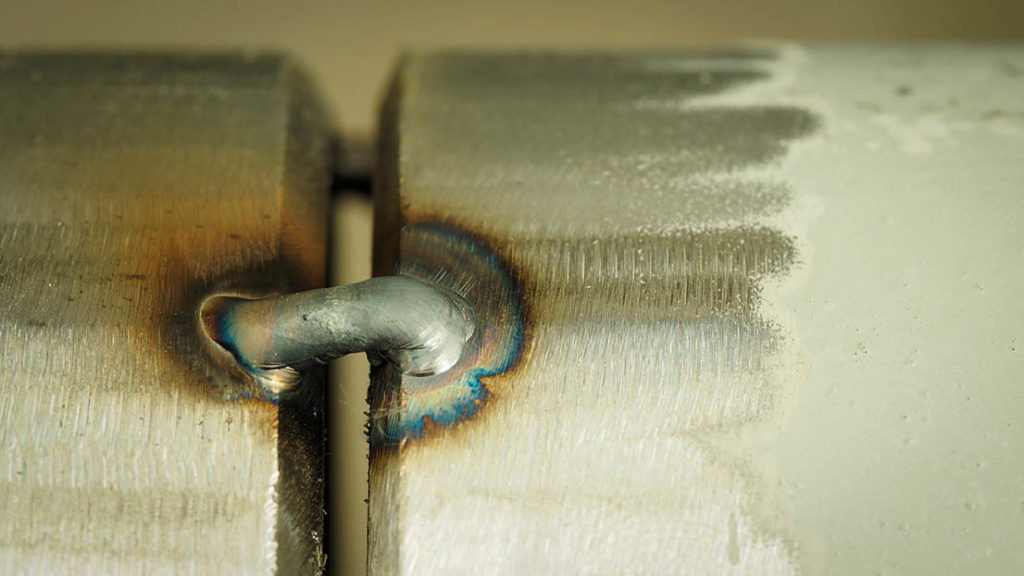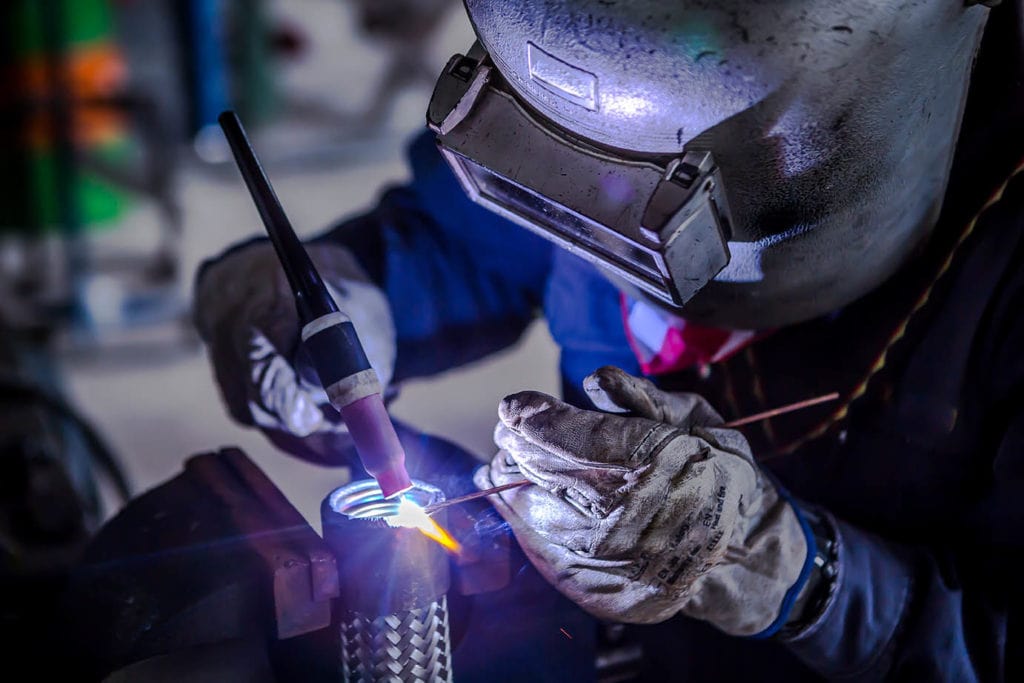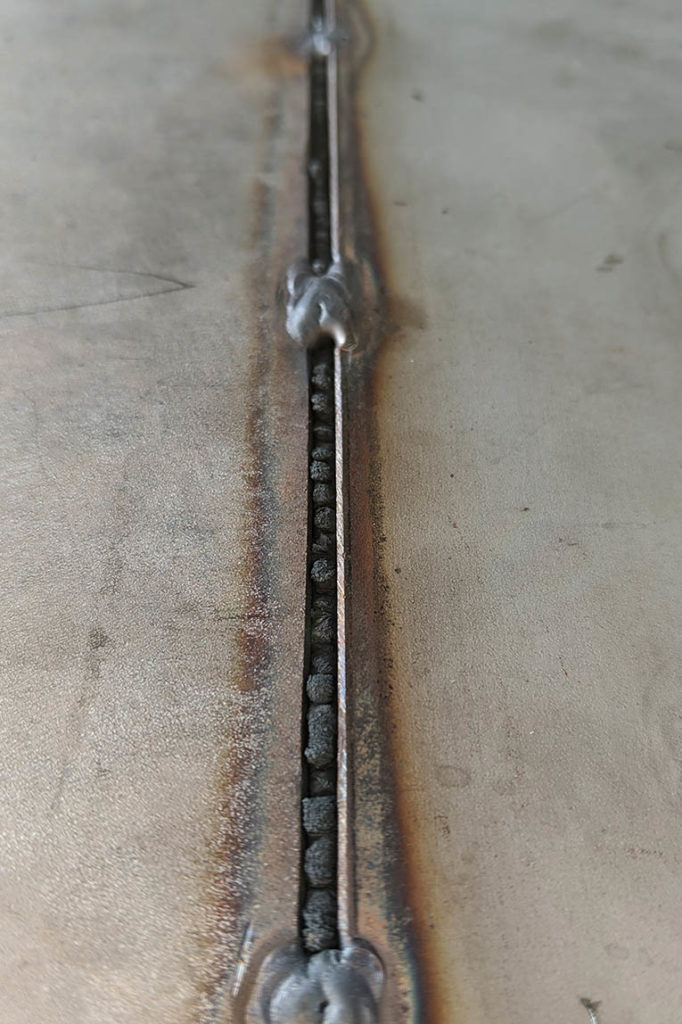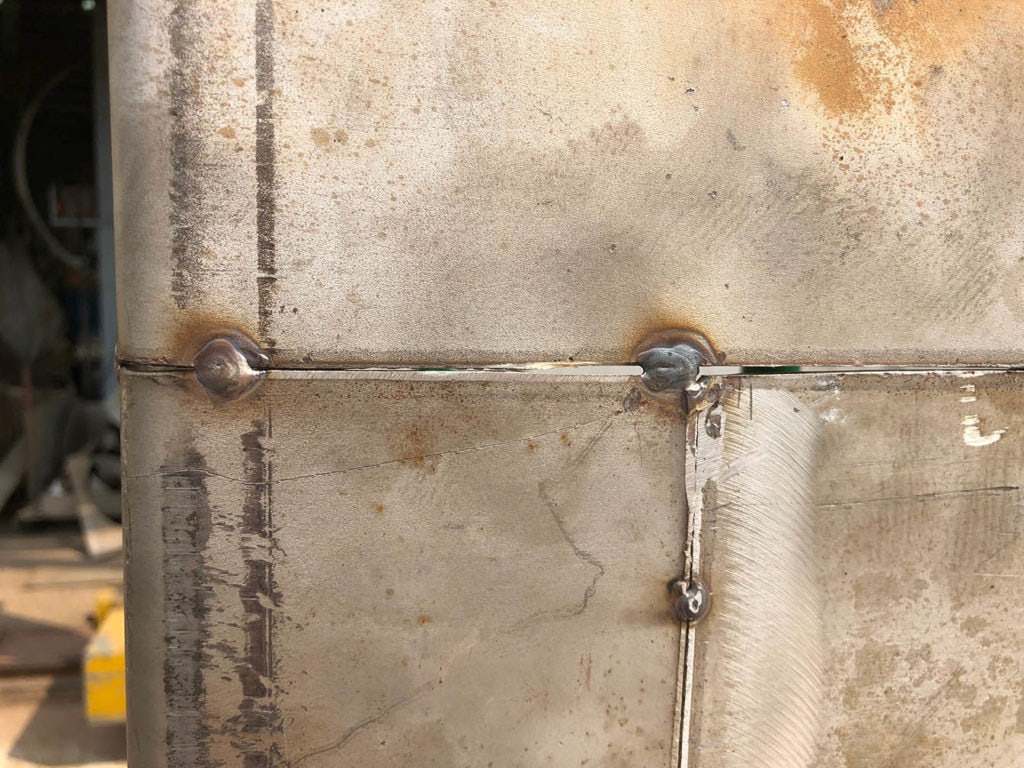What is Tack Welding? Understanding it Thoroughly
Last Updated on

There are a variety of welding processes that use different equipment. While ‘tack welding’ might seem like just one process among many, it is actually a specific application of any welding process. Without tacking, as it is commonly called, welding accurately and to proper specifications would be impossible. Tacking is essential for any welder, but especially for fitters who assemble weldments so that they can be welded by welders. In short, tacking is the deposition of a small amount of weld to hold a piece of metal in the proper position so that it can be welded.
How Does it Work?
Welding is the deposition of filler metal into the molten weld pool in order to fuse two pieces of metal. This can be done on a large or a small scale. Tack welding is done on a small scale. For example, a tack weld using Flux-Cored Arc Welding, for example, would be applied by the pull of the trigger on the welding gun. This is the same way that it would be welded as well. However, instead of welding 12 inches, the welder would apply small ¼ – ½ inch tacks along the workpiece to stabilize it. This way the welder should not have to worry about the piece moving in the middle of welding. Generally speaking, tacks by themselves are not meant to be an integral part of the structure of the weldment. They are almost always purely functional.
But tacks are not always this big. While the tacks may be about the same for Stick Welding as they are for Flux-Cored welding, when you are dealing with lighter gauge and more sensitive material, the tacks will need to be smaller. This is often the case when you are TIG welding (Tungsten Inert Gas). The tacks need to be planned and not haphazardly applied. This is true with lighter gauge welding where excessive heat distortion can occur due to carelessness, but it is also true with heavier gauge material.

What are the Different Types of Tack Welding?
Standard Tack Welds
The primary purpose of tack welding is to hold two pieces of metal together. They are not meant to be visible after final welding and assembly. Tack welds typically are strategically placed within the weld zone so as to be consumed by the permanent weld.
It is important to make sure that these types of tack welds are large enough to handle the weight of the material and the current/heat of welding, so they don’t break in the process. Equally important is to not make them so large that they can’t be consumed by the proper weld size, e.g., don’t tack ½ inch if you only need a ⅜ inch fillet weld. You need to strike the right balance between quantity and size of tack. That is, use more tacks if needed but make sure they are smaller.
Bridge Tack Welds
A bridge tack is used when the natural fit-up of the material leaves a gap that needs to be filled with weld. As it often happens, people make mistakes and material gets cut too short. Sometimes the material comes distorted from the supplier. Engineers often don’t account for the ‘nitty-gritty’ of the fabrication.
You can bridge a couple of different ways. The first is to quickly apply a weld in a sweeping motion across the gap. You can’t apply too much weld continuously or it will get too hot and fall through the gap (depending on the angle you are welding, of course). Take breaks in between each quick pass. Do this until you have secured a strong link between both joint members.
The second method is more careful but can take slightly longer. Apply small tacks on each joint member, alternating so the other side has time to cool before tacking again. Eventually, you will reach the middle of the gap, having joined both joint members. This works best with MIG or Flux-Cored welding as it is easier to ‘trigger’ it.
‘Hot’ Tacking
Yes, all welding is hot. But here ‘hot’ is relative to the normal temperature of tacking. When you have a gap that needs to be closed, meaning the joint members have to touch but other factors prevent them, you can use a hot tack.
Hot tacking occurs when you deposit an excessive amount of filler metal into the gap area so that the weld bridges the gap. Now here is where this is different from a regular bridge tack. Once you have bridged the two joint members with sufficient weld, quickly, while the weld is still red hot, smack the joint member into place with a sledgehammer. Be careful when you do this since molten metal can fly out of the joint! Once the weld cools, your bad fit-up is fixed!
Where is it Used?
Tack welding is used in all industries where welding is done. But certain types of tacks are used more in certain industries. For example, hot tacks and large bridge tacks are going to be more prominent in dealing with structural steel. This includes fabrication shops and constructing large buildings. You probably aren’t going to see a lot of hot tacking when TIG welding, since you are going to be dealing with lighter gauge material. It would be good to beat thin gauge stainless steel with a sledgehammer!
But since thinner gauge material (as might be seen in food-grade sanitary welding) is more prone to heat distortion, you might see a lot more small tacks for better adherence to blueprint specifications. Usually, the lighter gauge material has a much stricter tolerance for proper dimensions, e.g., thousandths of an inch versus 1/16th to 1/8th of an inch in structural steel.
Even though almost all welding uses tack welding, there are some instances where tacks are not used. Tacks generally take away the need to use fixtures. But some industries find it more efficient to use fixtures. For example, if a company is going to fabricate 70 sets of scissor lift handrails per day, it is going to be more efficient for it to utilize fixtures with machined surfaces. These are far more efficient and hold a stricter tolerance than manually assembling the pieces every time.
Advantages of Tack Welding
The biggest advantage of tack welding is that it can hold things in place that are otherwise difficult to stabilize using just your hands or work clamps. You also don’t need to build a fixture to assemble the pieces for your weldment. Rather than ordering a new piece of steel, hot tacking and bridge tacking are better economic solutions as well.
Disadvantages of Tack Welding
Tacks can make welding more difficult. Of course, it depends on the size. If they are applied so that they can be consumed by the final weld, then it’s usually not a problem. But if they are too large to be consumed, you have to grind them down to a more manageable size or change the size of your weld. This creates extra work for the welder.
Some tacks can get messy as well. Hot tacks can require depositing a lot of filler metal. Since it gets piled up, it can include slag inclusions and porosity. When you hit the steel with the sledgehammer, the slag and porosity can get stuck inside the joint causing problems down the road. This is why it is important to ensure that tacks are clean before welding.

Frequently Asked Questions (FAQs)
Is Tack Welding Hard?
While some ways of tacking such as bridge tacking and hot tacking can be slightly challenging, in general, tack welding is extremely easy. If someone is not a good welder, but has brains and wants to be a fitter, they can usually tack weld. You don’t usually have to push or pull the weld much when tacking. If you make any minor mistakes like a mild undercut, that can usually be filled in and corrected by the final weld.
How Strong is Tack Welding?
Even a small amount of weld can withhold a great deal of stress. It depends on the type of filler metal you are using as well. But a weldment that has several, even small, tack welds can potentially undergo thousands of pounds of stress.
- See also: What is a Keyhole in Welding?
Can You Tack Weld with a Stick Welder?
Absolutely. Welders have been tacking with Stick welding machines since before semi-automatic processes like Flux-Cored and MIG welding came around. However, even where Stick welding may be required for a certain project, the fitter may end up using Flux-Cored or MIG to fit up the weldment. This is because it is quicker to tack with a welding gun and may be easier to use one hand for some fitters.

Final Thoughts
Without tack welding, most welding would not be possible. Even most fixtures have to be tack welded at some point. Though its basic purpose is to hold pieces of metal together according to blueprint specifications, there are situations where it would not be possible to get a proper fit-up.
